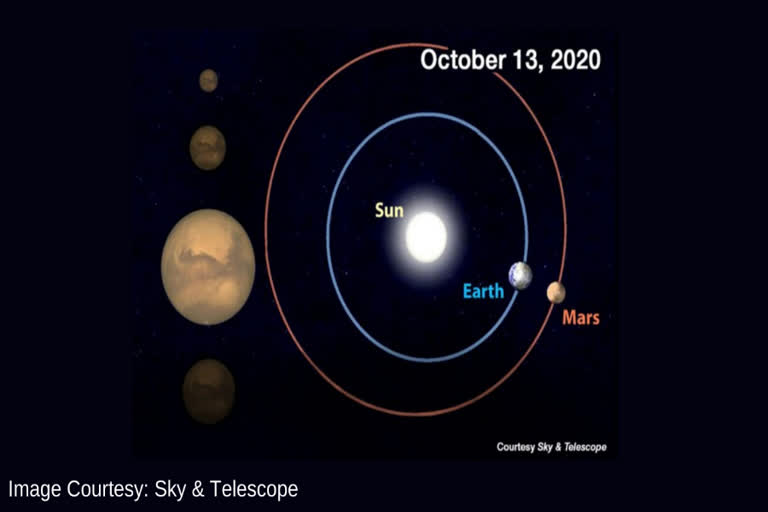Washington: Opposition -- the most significant Martian date on stargazers' calendars -- is also when the planet is at its brightest and near its maximum apparent size in telescopes. Because of the shapes and orientations of the planets' orbits, however, Mars and Earth were actually closest on Tuesday, October 6, separated by just 62 million kilometres, said Sky & Telescope.
For Mars, it is more than 160 times farther than the Moon. The planet would not be this near us again until 2035.
Mars oppositions occur at roughly 26-month intervals when Earth catches up to Mars as the planets circle the Sun. This year's opposition is special because it occurs close to when Mars reaches the point in its orbit that is closest to the Sun, called perihelion. The planet's orbit is distinctly out of round (its eccentricity is 0.09 versus 0.00 for a perfect circle), so at times Mars can be up to 21 million kilometres closer or farther from the Sun than average.
This year the Red Planet reached perihelion on August 3 and since that date has slowly been moving farther from the Sun. Although Mars was somewhat closer to Earth in 2018 i.e., 58 million kilometres away, for observers in the Northern Hemisphere the 2020 opposition is much more favourable since the Red Planet is farther north and therefore higher in the sky, where it can be viewed with telescopes in much greater detail because the planet is observed along a shorter, more direct path through Earth's atmosphere. "Indeed, Mars would not be comparably close and well-positioned for northern observers again until it reaches opposition in 2052, making this year's opposition all the more noteworthy," said Sky & Telescope consulting editor Gary Seronik.
Also Read: Hubble Watches Exploding Star Fade Into Oblivion
(ANI)



